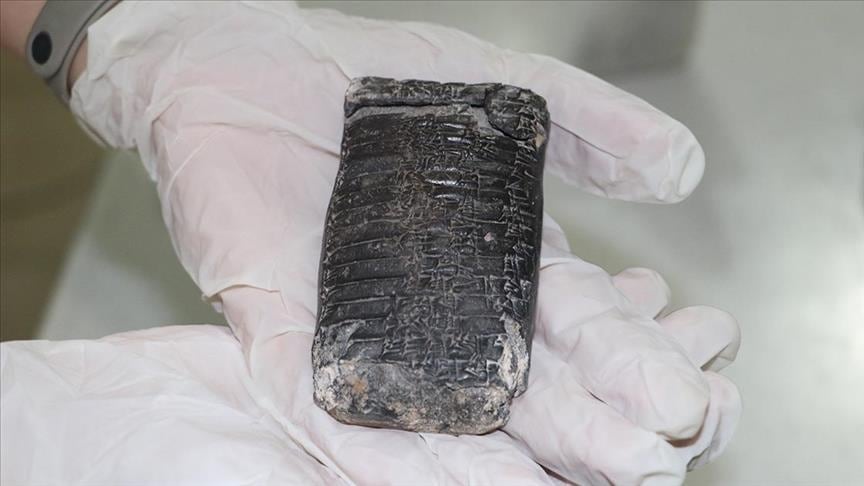Nezdá se mi označovat hliněnou tabulku jako tablet. Tady máme zažitý tablet jako počítačovou matlapatla desku a ne kus hlíny.
A 3,800-year-old intact tablet with a royal treaty has been found in Turkey
Categories: Nálezy nejenom s detektorem na blízkém východě
After this year's massive earthquakes in southern Turkey, archaeologists discovered a 3,800-year-old clay tablet with a Bronze Age cuneiform script during rescue work at Tell Atchana. The unique tablet, inscribed in Akkadian, represents a contract for the purchase of the ancient city of Alalakh by the ruler of the time.
Alalakh was the largest city in the region during the Middle and Late Bronze Age (2200-1300 BC) and the capital of the Mukish Kingdom in the 2nd millennium BC. It had fertile agricultural land, rich mines, and a convenient location at a trade crossroads connecting Anatolia, Mesopotamia, Egypt, and the Mediterranean.
Remains of two palaces made of unburnt bricks and wooden supports and square stone blocks are still known today. The first was built around 2000 BC, the second around 1735 BC. The city was burned by the Hittites in the 16th century BC and again in the mid-14th century BC. In the 13th century BC, the last inhabitants left and the city disappeared.
A millennium of occupation, destruction and repeated rebuilding has resulted in a 22 hectare, 10 metre high 'pile' of rubble and debris. The first archaeologist to systematically investigate the city was the British archaeologist Leonard Woolley. In the 1930s, he uncovered the famous Tell Atchan mound or the magnificent statue of Idrimi covered with Akkadian cuneiform writing describing his reign. After a long hiatus, archaeologists returned to excavations in 2000 and have continued their research ever since.
The former Alalakh suffered significant damage in the earthquake that struck the region on February 6 this year. A 25-member team of experts is working on the restoration of parts of the palace walls with the support of the Turkish Ministry of Culture and Tourism. The extremely rare clay tablet was discovered when the team was clearing debris from the collapsed wall. Its first examination provided information about the agreement of Yarim-Lim, the first known king of Alalakh, confirming the purchase of another city.
According to Murat Akar, professor of archaeology at Hatay Mustafa Kemal University, the tablet is not damaged at all and the discovery was very exciting. "It proves that kings at that time had great economic power and the potential to buy entire cities. Most likely, the tablet also bears the names of important townspeople who witnessed the sale," said Professor Akar. "It is an extremely rare find, especially with regard to deciphering the economic structure of that time, the relations between cities, the economic and political model," the archaeologist said, adding that the tablet will be taken to a museum for display after detailed research.
Video
Roman Nemec
Sources: middleeastmonitor.com, thehistoryblog.com, aa.com

research location
.jpeg)
Idrmimi statue in the British Museum (source - wikipedia)

tablet with a contract

font detail
The article is included in categories:









